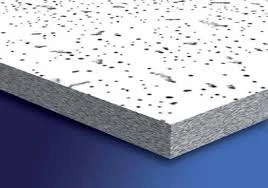Dec . 25, 2024 04:14 Back to list
Innovative Ceiling Grid Design for Enhanced Aesthetics and Functionality
The Importance of Ceiling Grid Systems in Modern Architecture
In the realm of contemporary architecture, the ceiling grid system has emerged as a crucial design element that plays a significant role in both aesthetics and functionality. Whether in commercial buildings, office spaces, or residential structures, ceiling grids offer versatility, efficiency, and innovative possibilities in creating comfortable and visually appealing environments.
Understanding Ceiling Grids
At its core, a ceiling grid system consists of a framework of metal or sometimes wood components that support ceiling tiles or panels. This framework provides a structural solution to conceal electrical wiring, plumbing, HVAC systems, and other mechanical elements that may disrupt the visual appeal of a room. With various designs and configurations, ceiling grids can be tailored to meet the unique demands of a space while enhancing its overall architectural language.
Aesthetic Flexibility
One of the main advantages of ceiling grids is their aesthetic flexibility. Architects and designers can choose from a wide range of materials, colors, and textures to match the desired theme of the space. For instance, in a modern office environment, a sleek metal grid paired with acoustic panels can provide a clean, professional look that promotes productivity. Conversely, in a creative studio, vibrant colors and unique tile designs can encourage innovation and artistic expression.
Moreover, ceiling grids can dramatically influence the perception of space. High ceilings, when coupled with intricate grid designs, create a sense of openness and grandeur. Conversely, strategically lowered ceilings can coze a space, making it feel more intimate and welcoming. This adaptability makes ceiling grids a pivotal design element in a variety of settings.
ceiling grid t

Functional Benefits
Beyond aesthetics, ceiling grid systems offer numerous functional advantages. These grids are often designed with acoustic features, contributing to sound insulation and reverberation control. In environments such as schools, healthcare facilities, and busy offices, managing noise levels is crucial for enhancing communication and maintaining focus. Acoustic ceiling tiles integrated within the grid system can absorb sound, making spaces quieter and more conducive to concentration.
Additionally, the modular nature of ceiling grids allows for easy access to essential infrastructure. Maintenance personnel can effortlessly remove tiles to reach overhead systems, making repairs and upgrades straightforward and less disruptive to occupants. This feature is particularly beneficial in commercial spaces where downtime can lead to significant financial losses.
Sustainability and Efficiency
In recent years, there has been an increasing emphasis on sustainability in architecture and design. Ceiling grid systems have also adapted to this trend. Many manufacturers now offer eco-friendly materials for grid systems and ceiling tiles, ensuring that architects can make responsible choices that benefit the environment. Moreover, innovations such as energy-efficient lighting integrated into the ceiling grids contribute to reduced energy consumption, aligning with the growing demand for sustainable building practices.
Conclusion
In conclusion, ceiling grid systems are an indispensable aspect of modern architecture that combines aesthetic appeal with functional efficiency. Their ability to enhance the visual language of a space while providing essential infrastructure support demonstrates their versatility and importance in contemporary design. As architects continue to explore innovative ways to create inspiring environments, ceiling grids will undoubtedly remain a vital component in achieving a harmonious balance between style and practicality. Whether through the use of acoustic features, modular construction, or sustainable materials, ceiling grids represent a key intersection of form and function in the evolving landscape of architecture.
-
Quality Ceiling Trap Doors & Access Panels | Easy & Secure AccessNewsAug.30,2025
-
Durable Ceiling T Grid Systems | Easy InstallationNewsAug.29,2025
-
PVC Gypsum Ceiling: Durable, Laminated Tiles for Modern SpacesNewsAug.28,2025
-
Pvc Gypsum Ceiling Is DurableNewsAug.21,2025
-
Mineral Fiber Board Is DurableNewsAug.21,2025
-
Ceiling Tile Clip Reusable DesignNewsAug.21,2025







